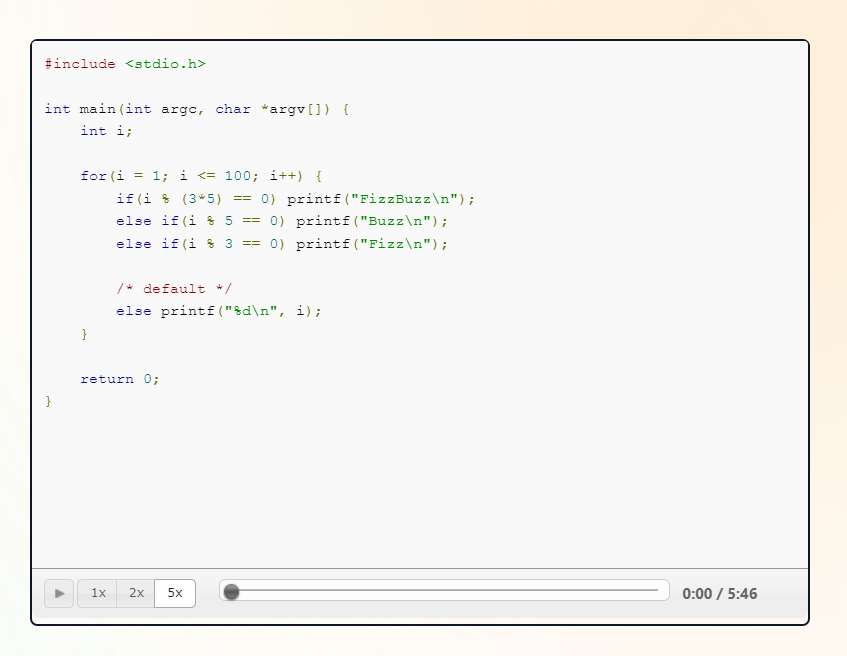Introduction
The world of software development evolves rapidly. According to W3Techs, PHP is used by 76.8% of all the websites with a known server-side programming language, highlighting its profound influence on the internet’s infrastructure.
This great usage of PHP in various domains creates opportunities, leading to a growing demand for proficient PHP developers. However, with high demand comes high standards.
According to Devjobscanner, in 2023, PHP accounts for 10% of the total demand for developer job offers. Understanding the importance of PHP becomes valuable for developers seeking to showcase their PHP prowess and for recruiters intent on hiring the best talent.
In this article, we will explore the top 8 PHP interview questions crucial for hiring managers to assess developer proficiency. We will also provide code snippets to aid hiring managers in discerning the depth of a candidate’s understanding during PHP interviews.
What is PHP?
PHP stands for Hypertext Preprocessor. It’s a widely adopted, open-source scripting language. While its primary design was for web development, it also serves as a general-purpose programming language. The main application of PHP scripts is on the server side, implying that they execute on the web server. This capability positions PHP as a formidable tool for crafting dynamic and interactive websites and web applications, a reason for its widespread presence on the internet.
What sets PHP apart is its adaptability. Developers have the advantage of embedding PHP directly into HTML, bypassing the need to invoke an external file for data processing. Moreover, PHP boasts smooth integration capabilities with various databases, including MySQL, Oracle, and Microsoft SQL Server. Its compatibility extends to a plethora of web servers, and it operates efficiently on diverse platforms, be it Windows, Linux, Unix, or Mac OS X. This flexibility gifts developers with an expansive toolkit.
Popular websites that use PHP:
- Wikipedia
- Tumblr
- Slack
- MailChimp
- Etsy
- WordPress
These websites have millions of users and handle billions of requests per day.
Considering its strength in server-side scripting, PHP often finds use in tasks such as collecting form data, managing files on the server, tracking sessions, and even orchestrating comprehensive e-commerce platforms. This multifaceted utility underscores the reason PHP expertise is in demand across many tech-focused positions.
Top 8 PHP Interview Questions
The complexity and depth of PHP interview questions can range widely based on the specific role and the level of expertise needed. In this section, we will explore 8 PHP interview questions that serve as an important resource for developers seeking to sharpen their skills or for hiring teams aiming to gauge candidate abilities accurately.
1. Array Manipulation
| Task: | Write a PHP function named findMissingNumber that receives an array of consecutive numbers and identifies the missing number. |
| Input Format: | An array of integers. |
| Constraints: |
|
| Output Format: | An integer representing the missing number. |
| Sample Input: | [1, 2, 4, 5, 6] |
Suggested Answer:
| function findMissingNumber($numbers) {
$count = count($numbers); $total = (($count + 1) * ($count + 2)) / 2; $sum = array_sum($numbers); return $total – $sum; } print_r(findMissingNumber(array(1, 2, 4, 5, 6))); |
| Output: | 3 |
| Why 3 is the answer? | The solution uses a mathematical formula to calculate the expected sum of consecutive numbers and subtracts the actual sum of the given array from it. The result is the missing number. |
| Common mistakes to watch out for:
|
|
| Follow-ups:
|
Can you optimize the function for larger arrays?
How would you handle negative numbers? |
| What the question tests?
|
The main goal of this question is to test the candidate’s ability to use built-in PHP functions for array manipulation and mathematical computations. |
2. Handling Exceptions and Working with Files
| Task: | Write a PHP function named readFileAndSumNumbers, which reads a file containing numbers (each number on a new line). The function should parse these numbers and return their sum. |
| Input Format: | A string representing the file path. |
| Constraints: |
|
| Output Format: | An integer representing the combined sum of all the numbers in the file. Lines that can’t be converted to numbers should be disregarded. |
| Sample Input: | “numbers.txt” (file contents: 1\n2\n3\nfoo\n4\n5\nbar\n) |
Suggested Answer:
| function readFileAndSumNumbers($filePath) {
$sum = 0; try { $file = new SplFileObject($filePath); while (!$file->eof()) { $line = $file->fgets(); if (is_numeric($line)) { $sum += (int)$line; } } } catch (Exception $e) { echo “An error occurred: “ . $e->getMessage(); } return $sum; } echo readFileAndSumNumbers(“numbers.txt”); |
| Output: | 15 |
| Why 15 is the answer? | The provided solution adopts the SplFileObject class, which provides an interface to access and manipulate file-related operations. It reads each line from the file, checks if it’s numeric, and then adds to the sum if true. |
| Common Mistakes to Watch Out For: |
|
| Follow-Ups: |
|
| What the Question tests? | The main objective of this question is to gauge how well a developer can blend various skills: file handling, type checking, exception handling, and basic arithmetic operations in PHP. |
3. Regular Expressions
| Task: | Write a PHP function by the name isValidEmail. This function should accept a string and employ a regular expression to determine its validity as an email address. |
| Input Format: | The input should be in string format. |
| Constraints: | The string must have a minimum length of one character. |
| Output Format: | Output should be boolean. The function should return true for valid email addresses and false for invalid ones. |
| Sample Input: | [email protected] |
Suggested Answer:
| function isValidEmail($email) {
return (filter_var($email, FILTER_VALIDATE_EMAIL)) ? true : false; } echo isValidEmail(‘[email protected]’) ? ‘Valid’ : ‘Invalid’; |
| Output: | true |
| Why True is the answer? | The solution uses PHP’s filter_var() function combined with the FILTER_VALIDATE_EMAIL filter. This ensures that the provided string adheres to the criteria of a valid email address. |
| Common Mistakes to Watch Out For: |
|
| Follow-Ups: |
|
| What the Question tests? | The goal of this question is to test a candidate’s understanding of PHP’s built-in functions and ability to handle string validation tasks that are common in real-world applications. |
4. Object-Oriented Programming
| Task: |
These methods will be employed to compute the area and the circumference of the circle in that order. |
Suggested Answer:
| class Circle {
private $radius; public function __construct($radius) { $this->radius = $radius; } public function getArea() { return pi() * pow($this->radius, 2); } public function getCircumference() { return 2 * pi() * $this->radius; } } $circle = new Circle(5); echo “Area: “ . $circle->getArea(); echo “\nCircumference: “ . $circle->getCircumference(); |
| Code Explanation | The solution represents a typical representation of a circle using object-oriented programming in PHP. It encapsulates the circle’s properties and related methods inside a class, ensuring a clear and organized structure. |
| Common Mistakes to Watch Out For: |
|
| Follow-Ups: |
|
| What the Question tests? | The primary goal of this question is to gauge a candidate’s comprehension of the fundamentals of object-oriented programming in PHP. This includes an understanding of concepts like classes, properties, methods, and constructors. |
5. Dealing with Databases
| Task: | Design a PHP function named fetchUsers. The primary role of this function is to establish a connection to a MySQL database. Once connected, it should retrieve all the entries from the ‘users’ table and subsequently return these records as an array. |
Suggested Answer:
| function fetchUsers($hostname, $username, $password, $dbname) {
// Create connection $conn = new mysqli($hostname, $username, $password, $dbname); // Check connection if ($conn->connect_error) { die(“Connection failed: “ . $conn->connect_error); } $sql = “SELECT * FROM users”; $result = $conn->query($sql); $users = []; while($row = $result->fetch_assoc()) { $users[] = $row; } $conn->close(); return $users; } |
| Code Explanation | The solution establishes a database connection using the MySQLi extension in PHP. After ensuring the connection is successful, it executes an SQL query to fetch all records from the ‘users’ table. The results are then stored in an array, which is returned by the function. |
| Common Mistakes to Watch Out For: |
|
| Follow-Ups: |
|
| What the Question tests? | This question evaluates a candidate’s proficiency with database connectivity in PHP, explicitly using the MySQLi extension. It tests their understanding of basic SQL queries and handling of database connection and retrieval operations. |
6. Design Patterns
Task:
| Task: | Craft an implementation of the Singleton design pattern using PHP. |
Suggested Answer:
| class Singleton {
// Hold the class instance. private static $instance = null; // The constructor is private to prevent initiation with outer code. private function __construct() {} // The object is created from within the class itself only if the class has no instance. public static function getInstance() { if (self::$instance == null) { self::$instance = new Singleton(); } return self::$instance; } } |
| Code Explanation | The Singleton design pattern ensures that a particular class has only one instance and provides a way to access its sole instance from any other code point.
The provided solution follows this pattern:
|
| Common Mistakes to Watch Out For: |
|
| Follow-Ups: |
|
| What the Question tests? | The objective of this PHP question is to test a candidate’s understanding of design patterns in PHP, specifically the Singleton pattern. It also requires a good understanding of object-oriented programming principles in PHP, including classes, methods, variable visibility (public, private, protected), and static properties and methods. |
7. Memory Management
| Task: | Write a PHP function named calculateMemoryUsage. This function should accept a large array as its parameter, conduct a specific action on the array (for example, sorting it), and subsequently determine and return the variance in memory consumption before and after executing the operation. |
Suggested Answer:
| function calculateMemoryUsage($largeArray) {
$startMemory = memory_get_usage(); sort($largeArray); $endMemory = memory_get_usage(); $memoryUsed = $endMemory – $startMemory; return $memoryUsed; } |
| Code Explanation | The provided function calculateMemoryUsage takes the following steps:
|
| Common Mistakes to Watch Out For: |
|
| Follow-Ups: |
|
| What the Question tests? | This question aims to evaluate a candidate’s awareness and understanding of PHP’s memory management mechanisms. It gauges how well they can measure the impact of specific operations on memory usage and indicates their proficiency in optimizing PHP code, especially when handling large data sets. |
8. HTTP and Session Management
| Task: | Write a PHP script that initiates a fresh session, defines a session variable, and subsequently extracts the value of that specific session variable. |
Suggested Answer:
| // Start the session
session_start(); // Set session variable $_SESSION[“favorite_color”] = “blue”; // Get session variable $favoriteColor = $_SESSION[“favorite_color”]; |
| Code Explanation | The solution involves the following steps:
|
| Common Mistakes to Watch Out For: |
|
| Follow-Ups: |
|
| What the Question tests? | This question assesses a candidate’s understanding of session management in PHP within the context of the HTTP protocol. It evaluates their ability to initiate, maintain, and retrieve data across different HTTP requests, an essential skill in building interactive web applications. |
Use Interview Zen for Free to Create Your Technical Hiring Interviews
Do you need help finding the right software developers for your team? Interview Zen offers a powerful solution. With a proven track record of over 500,000 interviews conducted, our platform revolutionizes how you assess candidates. This enables you to make more accurate hiring decisions compared to traditional methods. The demand for top-notch developers is surging, and Interview Zen is the reliable partner you need to meet this challenge head-on.

The platform is currently free to use, making it a cost-effective choice for businesses of all sizes. Though a pricing model may be introduced, the focus remains on providing a valuable service to as many users as possible.
By implementing Interview Zen in your hiring process, you can reap multiple benefits that will help you find the ideal candidate more efficiently and effectively.
Key Features Of Interview Zen
1. Custom Programming Questions
Interview Zen supports various programming languages, allowing you to tailor your technical assessments accurately. Whether you’re hiring for Python, C/C++, C#, Java, JavaScript, PHP, R, or other languages, you can create unlimited custom questions in various languages. This ensures that your assessments are uniquely suited to meet your hiring requirements.
To experience these features firsthand, you can try the demo available on the Interview Zen website.
2. Speedy Review
Interview Zen allows hiring managers to review recorded interviews at varying speeds, like 1x, 2x, or even 5x. This functionality provides valuable insights into how the candidate processed the question, how quickly they worked, and how much they modified their code throughout the assessment. This feature lets you better understand the candidate’s technical skills and problem-solving abilities.

3. Easy Invitations
Each interview you generate has a unique URL displayed on your dashboard. You can invite candidates by sending them the interview link or adding it to a job posting. This makes the process of taking the interview incredibly straightforward for candidates.

4. User-Friendly Interface
Interview Zen focuses on offering essential features that are not only effective but also easy to navigate. With just three clicks, you can create an interview, send out invites, and begin evaluating candidates. This user-friendly approach sets it apart as a preferred choice for online assessments.
If you want to know how to structure your technical interviews effectively, check out our guide on How to Structure Technical Interviews for Software Developers.
Conclusion
Structured and effective PHP technical interviews are important in hiring the best talent for your organization. These interviews provide a reliable assessment of a candidate’s technical understanding, problem-solving capabilities, approach to coding challenges, and adaptability to real-world scenarios. An effective interview process can make a huge difference between hiring a merely competent developer and securing a top-tier professional who can drive innovation and growth.
However, a successful interview is not just about the questions you ask but also the environment and tools you use. That’s where Interview Zen comes into play. It’s tailored to address common pitfalls in the PHP interview process, ensuring an effective evaluation of candidates beyond their coding skills.
Give Interview Zen a try and observe a noticeable difference in your PHP technical hiring process.
Start your journey to better, more insightful interviews today!
Don’t miss the opportunity to elevate your hiring practice to the next level. Try Interview Zen for your next round of technical interviews.
Read more articles:




